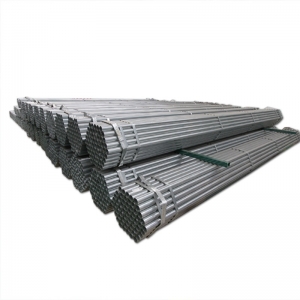The hot-dip galvanized steel pipe is a hot-dip galvanized steel pipe which is formed by bending a steel strip or a coiled plate in a spiral shape and welding the inner joint and the outer joint by double-sided submerged arc automatic welding, and can be widely applied to construction for the following reasons. , machinery, coal, chemical, railway vehicles, automotive industry, roads, bridges, containers, sports facilities, agricultural machinery, petroleum machinery, mining machinery and other manufacturing industries. Let’s talk about the advantages and disadvantages of hot-dip galvanized steel pipe.steel pipe manufacturers
1. The surface of the galvanized steel pipe is welded with hot dip or galvanized steel. Zinc plating can increase the corrosion resistance of steel pipes and prolong their service life. Galvanized pipes are widely used, in addition to pipelines for general low-pressure fluids such as water, gas, oil, etc., and also used as oil well pipes and oil pipes in the petroleum industry, especially in offshore oil fields, and oil heaters and condensation of chemical coking equipment. Cooler, coal distillate oil exchanger pipe, and trestle pipe pile, support pipe for mine tunnel, etc.

2. Because it is continuously bent, the length of the spiral tube is not limited, and the length can be determined at will.
3. The weld spiral is evenly distributed on the circumference of the entire spiral tube, so the spiral tube has high dimensional accuracy and strong strength.
4. Easy to change size, suitable for the production of small batch and multi-species spiral tubes. The weld seam of the hot-dip galvanized steel pipe is longer than the weld seam of the straight pipe of the same specification, and the hot-dip galvanized steel pipe is subjected to the maximum pressure under the same specification wall thickness.
5. Hot-dip galvanizing has the advantages of uniform plating, strong adhesion and long service life. The hot-dip galvanized steel pipe matrix and the molten plating solution undergo complex physical and chemical reactions to form a corrosion-resistant structure of a zinc-iron alloy layer. The alloy layer is integrated with the pure zinc layer and the steel pipe base. Therefore, its corrosion resistance is strong.
6. As long as the forming angle is changed, it is possible to produce steel pipes of various calibers with strips of the same width, which is easy to adjust.
7. The surface of the galvanized steel pipe is welded with hot dip or galvanized steel. Zinc plating can increase the corrosion resistance of steel pipes and prolong their service life.
The defect of the weld of the hot-dip galvanized steel pipe is “oblique defect”. In the course of use, the principal stress direction of the steel pipe, that is, the equivalent defect length in the axial direction of the steel pipe is smaller than that of the straight seam pipe; secondly, since the pipeline steel is a rolled steel plate, 3 inch square tubing, the impact toughness has a large anisotropy, and the rolling is smooth. The CVN value of the direction can be three times higher than the CVN value perpendicular to the rolling direction.
The advantages and disadvantages of hot-dip galvanized steel pipe can only be known by comparison. The hot-dip galvanized steel pipe can be detected through various data indicators after use, so we can only provide you with the theoretical advantages and defects of hot-dip galvanized steel pipe. The thing is still based on the feedback provided by real users. The above is the full content of the advantages and disadvantages of hot-dip galvanized steel pipe.